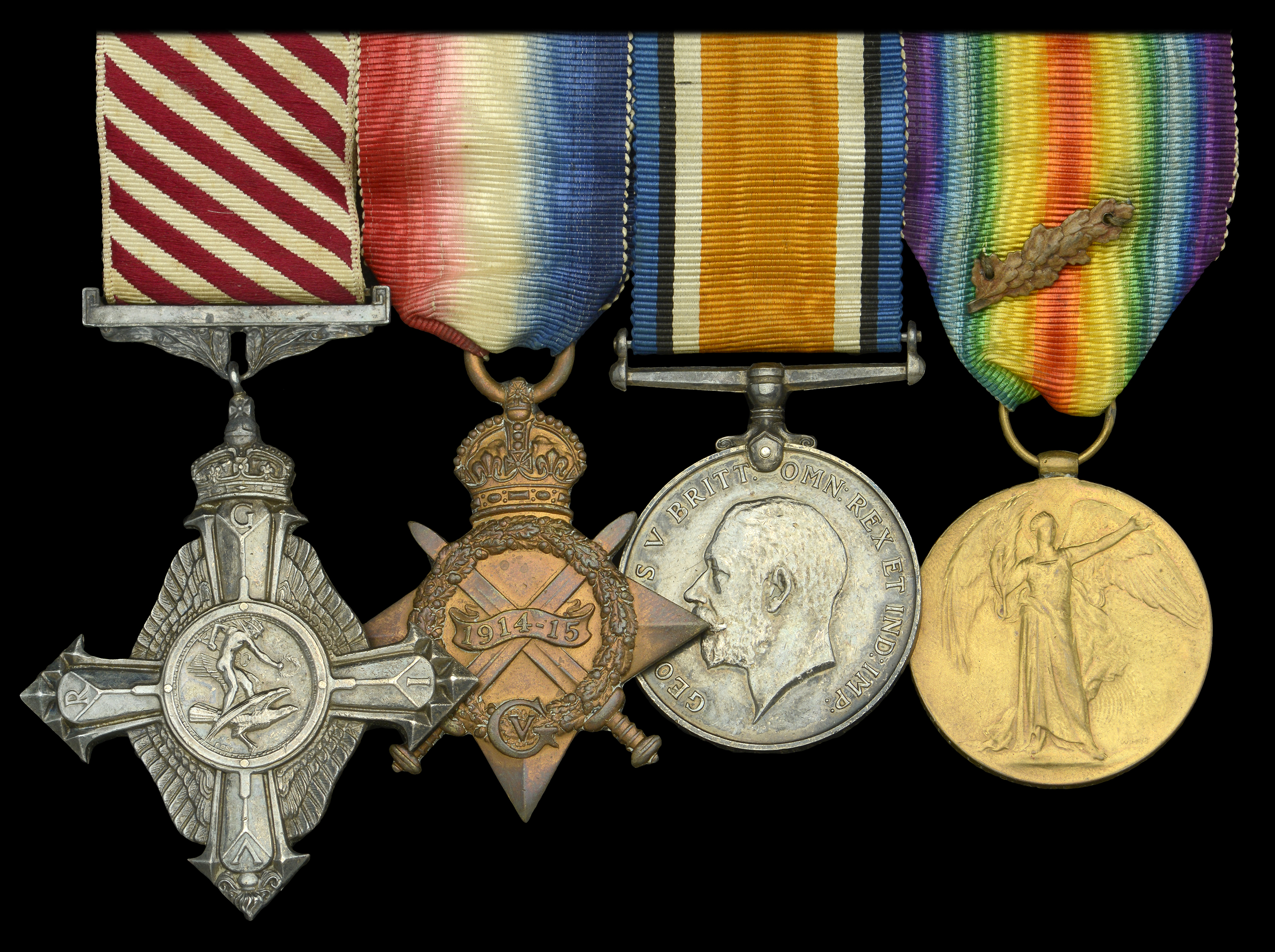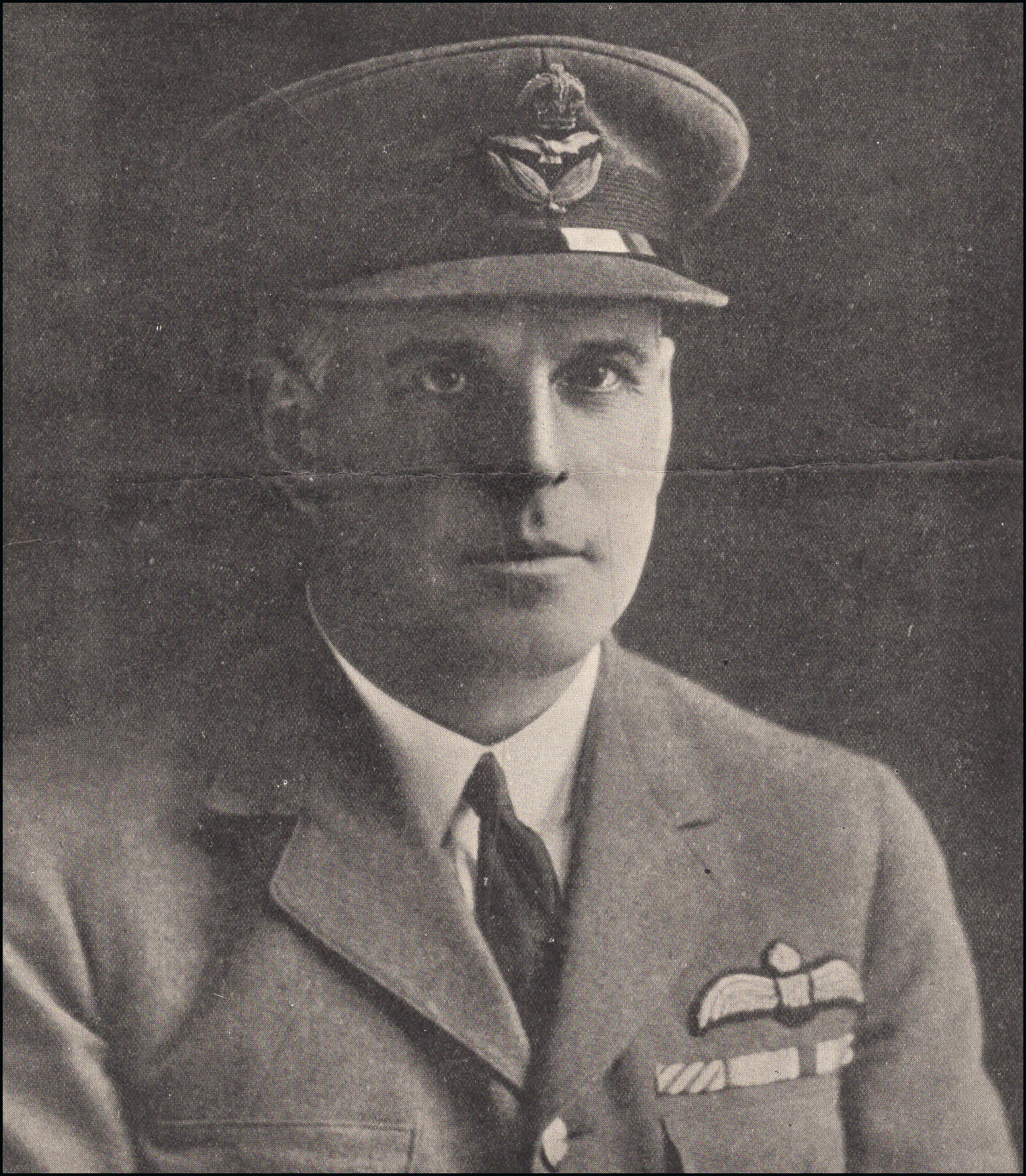The notable Great War test and experimental pilot’s A.F.C. group of four awarded to Flight Lieutenant C. A. Rea, Royal Naval Air Service, afterwards Chief Test Pilot for Boulton and Paul Air Force Cross, G.V.R.; 1914-15 Star (F.2901, C. A. Rea. P.O.M., R.N.A.S.); British War and Victory Medals, with small M.I.D. oak leaves (Flt. Lt., R.N.A.S.) mounted as worn, the last with officially re-impressed naming, very fine and better (4) £1,200-£1,600 --- Importation Duty This lot is subject to importation duty of 5% on the hammer price unless exported outside the UK --- --- Provenance: Spink, April 1999. A.F.C. London Gazette 2 November 1918: ‘In recognition of valuable flying services performed in their various capacities as Flying Instructors, Test, Ferry and Experimental Pilots.’ Cecil Arthur Rea was born in Belfast on 21 May 1885 and was employed on the Canadian Northern Railway in the period leading up to the Great War. Appointed a Petty Officer Mechanic on joining the Royal Naval Air Service in December 1914, he witnessed active service in the Armoured Car Detachment prior to applying for a commission in the Royal Naval Air Service. Duly commissioned Flight Sub. Lieutenant in July 1915, he qualified for his aviator’s certificate at Chingford in September and attended further courses at Eastchurch and Hendon. His service record notes that he completed some night flying about this time, in addition to surviving a prang in G.W. Box Kite No. 3609 in March 1916: no blame was attributed to him, and he escaped unscathed. Advanced to Flight Lieutenant in October of the same year, he commenced his brief as a test and experimental pilot in July 1917, when posted to R.N.A.S. Grain in Kent, an armament establishment and seaplane base. By mid-1918, he had flown in excess of 150 hours in all types, pioneering work that contributed to the award of his A.F.C. and a mention in despatches (London Gazette 3 June 1918, refers). Post-war, Rea served in the regular R.A.F. until 1926 and continued as a test pilot of Seaplanes, Amphibians and Aeroplanes. In 1924 he was granted special leave as one of two pilots selected to fly the Gloucester Aircraft Company’s Schneider Trophy entry, a Gloster Napier Seaplane, in the contest that year in the United States. Unfortunately, the other pilot, Captain H. S. Broad, crashed the machine ‘when alighting after its first flight’ and, in Rea’s words, ‘performed some unrehearsed “hydrobatics” but escaped with a shaking.’ As a result, the 1924 British entry was scratched. On transfer to the R.A.F. Reserve in 1926, Rea joined Boulton & Paul Limited as Chief Test Pilot and Company Liaison Officer with the R.A.F. and Air Ministry. The following year he raised Boulton & Paul’s profile by piloting one of their machines to win in the Tradesmen’s Cup and by the conclusion of his test pilot career he had flown an impressive tally of 136 aircraft types. In 1936 he became a founder of John Short Limited and established the company’s aircraft works at Norwich, and in 1938, he was appointed Operations Officer (Balloons) at the Air Ministry. He subsequently moved to the Ministry of Aircraft Production, as Production Officer with responsibility for barrage balloon equipment. From 1940 to 1943 he was Senior Production Officer concerned with various aspects of balloons and aircraft, and between 1944 and 1945 was Technical Officer at the ‘German Document Centre’. Rae retired to the south coast, where he died at Iden, near Rye, Sussex in April 1975, aged 89. Sold with mounted group of four miniature medals, together with a quantity of original documentation, largely comprising career correspondence, including a letter from the Secretary of the Gloucestershire Aircraft Company Limited regarding the recipient’s travel arrangements for the 1924 Schneider Cup (dated 10 September 1924); a letter from Colonel the Master of Semphill’s Secretary discussing the possibility of ‘a world flight’ in a Fairey Condor (dated 27 September 1924); a signed letter from Sir Alan Cobham regarding the testing of the Airspeed Ferry in time for National Aviation Day (dated 18 March 1932); a signed letter from Handley Page (dated 5 August 1948); and three official Air Ministry communications concerning Rea’s transfer, extension and final termination of service in the R.A.F. Reserve of Officers.









